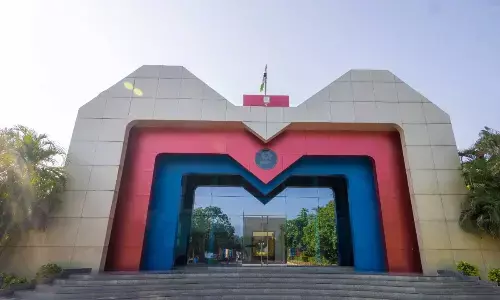Migration issues hit recovery four months post Nepal quake

Four months after the devastating April 25 earthquake, the delayed return of migrant family members, coupled with low levels of disaster-preparedness, has become a major concern for Nepal\'s households with external migrants.
 Four months after the devastating April 25 earthquake, the delayed return of migrant family members, coupled with low levels of disaster-preparedness, has become a major concern for Nepal's households with external migrants.
Four months after the devastating April 25 earthquake, the delayed return of migrant family members, coupled with low levels of disaster-preparedness, has become a major concern for Nepal's households with external migrants.
Standing next to a precariously propped-up makeshift tent and their damaged stone houses, Lalita Koirala and Kalpana Koirala of east Nepal's Dhading district have some things in common - they survived the quake, their husbands work abroad and the two are desperately waiting for them to return to start rebuilding.
Lalita's husband works in the Gulf while Malaysia is the destination country for Kalpana's spouse: both regions being hot-spots for Nepal residents, mostly youth.
While Kalpana manages her six-member family, including two young children, Lalita looks after three older members and a 13-year-old son - all with the help of their husband's remittances - in makeshift shelters.
Tremendous community support complements the resilience of these women. Now that four months have gone since the quake, they are past the trauma and contemplating building stronger structures.
"I want my husband to return soon so that we can start building a better house. He has sent a little money and I have been able to talk to him only twice in the last four months, We were not prepared for anything so big... but now we will build better," Kalpana, who was cutting grass beside her three-storey house when disaster struck on April 25, told this visiting IANS correspondent.
Bandita Sijapati, an expert on the subject, says issues relating to migration are not only important in the context of natural disasters but are also likely to have considerable impact on the recovery and rehabilitation process.
Further, referring to a recent study, she said low levels of disaster preparedness amongst migrant households (as well as non-migrant households) are an indication that simply having an inflow of cash is not sufficient.
Sijapati, Research Director at the Centre for the Study of Labour and Mobility (CESLAM), noted that the condition of "migrant households is as precarious, if not more" than the average household post the temblor.
The Centre undertook a quick assessment a month after the quake in four of the 14 severely affected districts: Sindhupalchowk, Kavrepalanchowk, Dhading and Kathmandu.
Of 166 households surveyed, 115 were migrant households (including both internal and external) and 51 were non-migrant.
The findings showed that most families asked their migrant members not to return and instead continue to provide support during rehabilitation by remitting additional funds.
But then, 73 percent of the households with external migrants reported that their absence had a negative impact on the household's post-earthquake coping mechanisms.
Lalita, who refuses to sleep inside any building except her makeshift shelter, admitted that the presence of a male member would have been significantly helpful to salvage their belongings.
"We couldn't even salvage our foodgrain stock from inside our old house because my husband was not there and my father-in-law is ageing. Neighbours have been helping us out from the start," Lalita lamented, adding the family continues to deal with aftershocks. There have been 376 aftershocks since April 25.
According to the 2011 census, the total absentee population in the severely-affected districts was 300,435, which represents around six percent of the total population of the 14 districts. Of these, 80 percent were males and 20 percent females.
Despite the government's efforts to support the return of migrant workers whose families were affected by quake, many were unable to.
This was because many were either unaware of government arrangements to facilitate their return or because they were unable to take time off from their employers, Sijapati explained.
And to top it all, both Lalita and Kalpana felt the government support of Nepali Rs.15,000 ($145) is inadequate. For them, remittance has become a key player to get things going. But the return of their spouses outweighs monetary concerns.
"There is greater need for other information that focusses on raising awareness, information dissemination about seismic resistant standards, access to disaster preparedness programmes and financial literacy on better management of remittances to fulfill the immediate recovery needs as well as sustainable rehabilitation," Sijapati stressed.
In addition to financial literacy, attention has also been drawn to tapping the internal and external job markets for livelihood recovery post the quake.
This has been suggested in the recently released 'Strategic Framework for Resilient Livelihoods in Earthquake-Affected Areas of Nepal' report prepared by the International Centre for Integrated Mountain Development (ICIMOD) together with the Nepalese government's National Planning Commission.
"Tap the potential of internal and external job markets by providing targeted skill building trainings and support the financial literacy of migrant households in earthquake-affected areas and utilize the skills and remittances of the Nepali diaspora," the report states.
In fiscal 2013-14 alone, approximately half a million Nepalis, mainly young men and women, took up foreign employment.
The official remittance received during the first nine months of 2013-2014 was almost Nepali Rs.400 billion ($4 billion), or close to 30 percent of the country's total GDP.
Next Story














